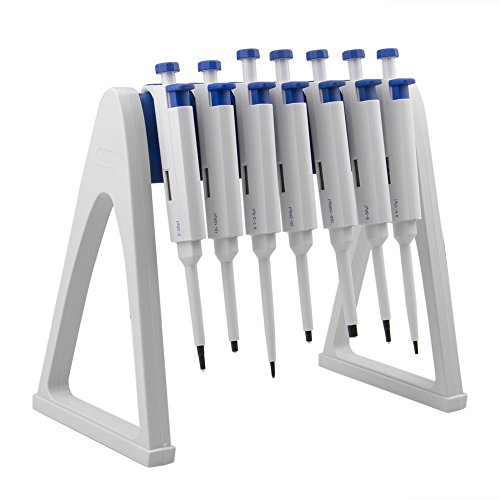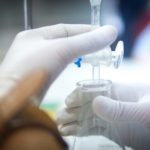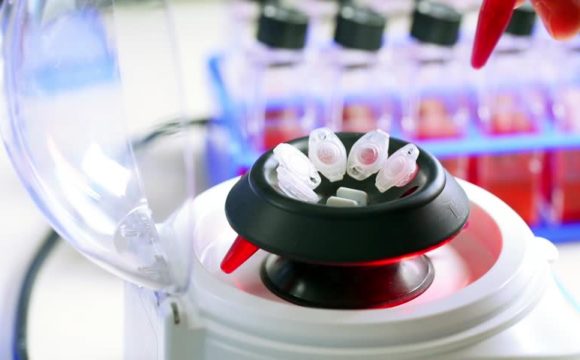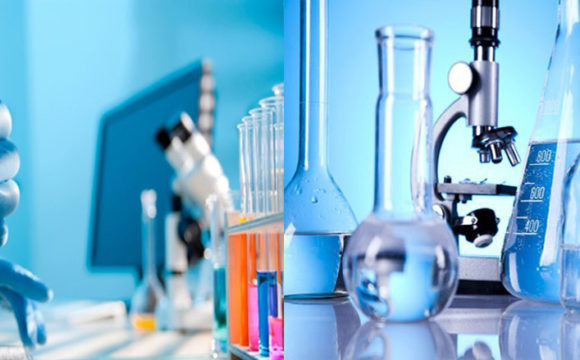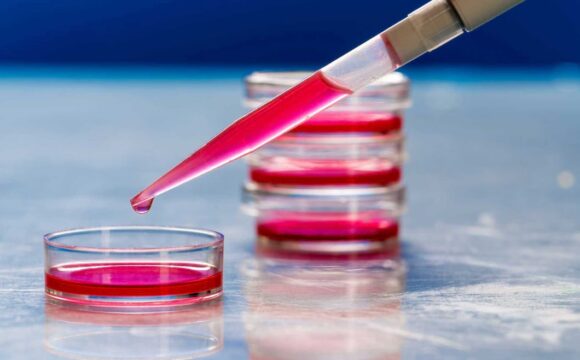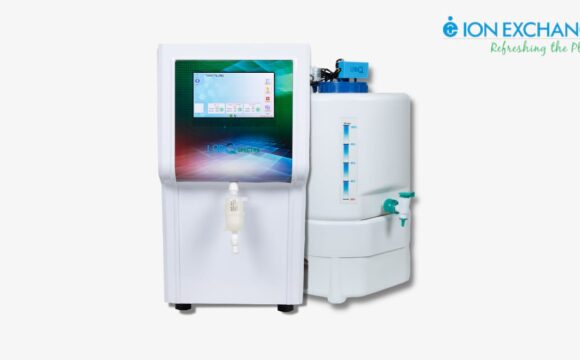In most of the laboratories, exact and reproducible dispensing of liquids is important for the experiments. And, the micropipette has been the mainstay of chemistry and biology laboratories for decades to accurately and precisely deliver smaller volumes of a liquid. The micropipettes are used in various types of laboratories, including microbiology, environmental sciences, medical, chemical, chemistry , diagnostic labs etc. Despite the great importance of precise liquid handling in research and diagnostics, very little attention is often paid to the pipettes. The micropipettes come in many sizes depending upon the volume that can be transferred. The common micropipettes used in the lab are the P-10, P-20, P-100, P-200, and P-1000. The number indicates the maximum volume measured in microlitres that can be transferred.
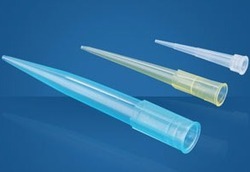
Most micropipettes have the following basic parts:
- Volume adjustment knob – turn to adjust the volume
- Volume indicator
- Plunger button – aspirate and dispense
- Tip ejector button – discard tip after use
- Volume adjustment knob
- Plastic shaft
- Tip ejector arm – discard tip after use
In order to draw liquids into the shaft of the pipette disposable plastic tips are attached to the shaft. There are different types of tips of different sizes and colours, depending on the micropipette they are used with, and the volume to be dispensed.
The most commonly used tips are: large blue – 200-1000µL, small yellow – 2-200µL, small white – <2µL
Usage
The micropipettes are used to deliver accurate volume and this is dependent on the following:
- Position: During the aspiration of liquids, the pipettes should be held vertical. Holding a pipette 30°C off vertical can cause 0.7% extra liquid to be aspirated due to the hydrostatic pressure. And while storing also always keep pipettes in an upright position.
- Pre-Wetting/Pre-Rinsing Tips – Always take the old tip off and place a new one on the shaft before pipetting. As the pre-wet tips can cause inconsistency between samples.
- The release of plunger – It is recommended to employ a smooth, consistent pipetting rhythm to increase both accuracy and precision. Releasing the plunger abruptly can cause liquid to be bumped inside the pipette. This can cause liquid to accumulate inside the instrument which in turn can be transferred to other samples causing variability in sample volume and the potential for cross-contamination.
- Immersion Depth – The pipette tip should only be inserted into the vessel containing the liquid of being transferred about 1-3mm. Because, if the tip is immersed beyond this, the liquid could adhere to the tip and be transferred along with the tip or if, it is not immersed far enough, then air could be drawn into the tip which could yield incorrect results.
- Equilibration time – To lessen the effects of thermal expansion which can impact the delivery of the volume. The tip, the pipette, the liquid being transferred, and the transfer container itself all be allowed to equilibrate to the same temperature.
- Pipette Micrometer Setting – The volume delivery performance may change radically and may become completely undefined by either over dialling or under dialling the recommended range of the pipette.
Handling
To keep pipettes properly functioning, it is important that they must be handled with utmost care with the following precautions:
- The volume should never be adjusted beyond the range of the micropipette. No micropipette should be adjusted below zero μl. The P20 should never be adjusted above 20μ, the P200 over 200μl and the P1000 over 1ml.
- The volume adjustor dial should never be forced.
- Do not drop pipettes.
- Always use a smooth motion when using the pipettes. There should be not “snapping” noises.
- Always store the micropipettes upright on the mounted rack on your bench when not in use.
- Always choose appropriate size pipette for the volume you are measuring.
- There are two stops on a micropipette plunger: The plunger is slowly depressed to the first stop to aspirate the sample. This pushes air out of the pipette tip in preparation for aspiration of the correct volume of fluid. This is the point of initial resistance. The tip is inserted into the liquid and the plunger slowly released to aspirate the sample.
- The second step is to dispense; the plunger is carefully pushed down beyond the initial resistance until it is in contact with the body of the pipette. Applying pressure to the second stop results in dispensing the correct volume of fluid.
Cleaning and Maintenance
The preventive maintenance of pipettes routinely will help to minimise breakdowns and keep them in good operating condition. As per the criticality of the pipette, the types of solutions being transferred with the pipette, and the age of the pipette, maintenance schedules can vary. Regular maintenance includes the following steps:
- Decontaminate the outside of the pipette: Wipe the pipette with a decontaminant solution and dry the pipette with lint-free wipes before and after use.Inspect the general appearance of the pipette:
- The plunger should be straight and free of corrosion or cracks and measurement window should be clear and properly aligned. The pipette should be free of physical or chemical damage and free of cracks or breaks.
3. Disassemble and clean the pipette:
- Remove the tip ejector
- Separate the lower half of the pipette from the top half
- Decontaminate each component as it is removed from the pipette
- Remove the seal and O-ring assemblies
- Inspect visually for worn and cracked parts
- Clean air passages (inspect the nose cone) with a long, fibre-free cotton swab dipped in cleaning solution
- Inspect the piston assembly for bends, corrosion or cracks
- Rinse with distilled water and allow to air dry
4. Replace the o-ring (s) and seal (s)
5. Lubricate (if applicable) for lubrication the pipette manufacturer’s user manual should be referred.
6. Re-assemble the pipette and check functionality
7. Equilibrate the pipette upright in a stand with the micrometer set at the nominal volume overnight.
8. Calibrate/verify the performance of the pipette
Calibration
In order to perform optimal functions, the micropipettes must be properly calibrated every three months. The calibration can be performed easily in the lab by gravimetric method.
Principle: The density of distilled water is constant under a constant temperature and atmospheric pressure. The volume of water can be determined by weighing dispensed water. The accuracy of measurements is affected by ambient temperature, atmospheric pressure and relative humidity while determining the volume of water. Therefore, these factors are usually combined to give the Z factor, used in the calculation of the volume of water. Then the calculated volume of water is compared with the theoretical volume to determine the accuracy and precision of the pipette
Steps for Micropipette calibration
- As the temperature affects the water density, and hence the theoretical weight., estimate the water temperature.
- Place an empty weighing boat onto the weighing balance.
- Tare to zero the weight.
- Add the appropriate volume of water via micropipette.
- Record the weight and repeat nine times for a total of 10 readings.
- Calculate the mean and standard deviation of the readings.
- For the micropipette to be properly calibrated:
- The coefficient of variation (C.V.), which is calculated by dividing the standard deviation by the mean, should be less than 1%.
- The accuracy of the micropipette, which is calculated by dividing the actual mean by theoretical mean, should be between 99-101%.
- If the micropipette is no longer correctly calibrated, send it to the manufacturer for calibration. The technicians will usually need to adjust (tighten or loosen) some screws to offset the volume.
References
Quality Control Procedure for Pipetting Systems. Janet M. Marks, A. Michael Zimmer, Edward A. Silverstein and Richard A. Holmes J. Nucl. Med. Technol. 1976;4:141-142.
https://g6pd.qap.tw/Pipette%20calibration.pdf
http://researchlabforbiotechbiochem.blogspot.com/2011/08/calibration-of-micropipettes.html
https://www.artel-usa.com/resource-library/8-easy-steps-for-performing-pipette-preventive-maintenance/



